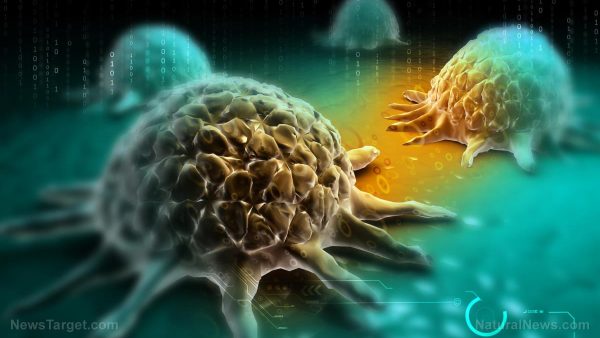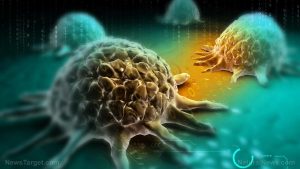
Pleomorphic rhabdomyosarcoma – causes, side effects and treatments at NaturalPedia.com
Tuesday, June 12, 2018 by Michelle Simmons
http://www.naturalpedia.com/pleomorphic-rhabdomyosarcoma-causes-side-effects-and-treatments-at-naturalpedia-com.html

Pleomorphic rhabdomyosarcoma (PRMS) is a rare and controversial tumor of skeletal muscle phenotype. It is a type of rhabdomyosarcoma that is more common in adults. Rhabdomyosarcoma is a cancerous tumor that occurs in the soft tissues in the body, especially the muscles. Other types of rhabdomyosarcoma include embryonal rhabdomyosarcoma and alveolar rhabdomyosarcoma. It is comprised of an unusual mix of round, spindle, and polygonal-shaped cells seen with differentiated skeletal muscles. It may occur deep within the body tissues. The lower and upper limbs are the most common locations where these tumors grow, and less frequent in the chest and abdomen. The cause and mechanism of pleomorphic rhabdomyosarcoma are not determined, but the rapidly forming and acutely infiltrative tumor is believed to arise from embryonic connective tissues responsible for skeletal muscle development. It is also suspected that either inherited genetic defects or genetic mutations cause the condition.

Known side effects of pleomorphic rhabdomyosarcoma
Pleomorphic rhabdomyosarcoma causes tumors that become painful as they grow. The tumors can cause compression on the body region, which leads to obstruction of nearby organs.
Body systems harmed by pleomorphic rhabdomyosarcoma
Pleomorphic rhabdomyosarcoma harms the muscular, skeletal, and immune systems.
List of foods or nutrients that prevent pleomorphic rhabdomyosarcoma
There is no information on what foods or nutrients prevent pleomorphic rhabdomyosarcoma.
Treatments, management plans for pleomorphic rhabdomyosarcoma
Treatment for pleomorphic rhabdomyosarcoma includes surgery to remove the entire mass. After the surgery, radiation therapy, intensive chemotherapy, or both will follow. In some cases, chemotherapy or radiotherapy is given first before the surgery to shrink the tumor. To relieve the symptoms temporarily, arterial embolization of the tumor is used. This will also reduce blood loss during the surgical removal of the tumor. When pleomorphic rhabdomyosarcoma is located at an inaccessible location or is unsafe for surgery, non-invasive methods are applied. After the surgery, minimum activity level must be ensured until the surgical wound heals. Moreover, follow-up care with regular screening and check-ups are also suggested.
Where to learn more
- Top healing foods that fight cancer: Do you eat them often enough?
- Celery may help kill cancer
- Omega-3s dramatically inhibit breast cancer tumor growth
- Young mom learns she may die of cancer after doctor misdiagnosed and put her through unnecessary chemo
- Is Modern Medicine Founded on Error?
Summary
Pleomorphic rhabdomyosarcoma is a rare and controversial tumor of skeletal muscle phenotype.
Pleomorphic rhabdomyosarcoma causes tumors that become painful as they grow. In turn, the tumors can obstruct nearby organs.
Pleomorphic rhabdomyosarcoma treatments include surgery, radiotherapy, and chemotherapy.
Sources include:
Tagged Under: Tags: Pleomorphic rhabdomyosarcoma





